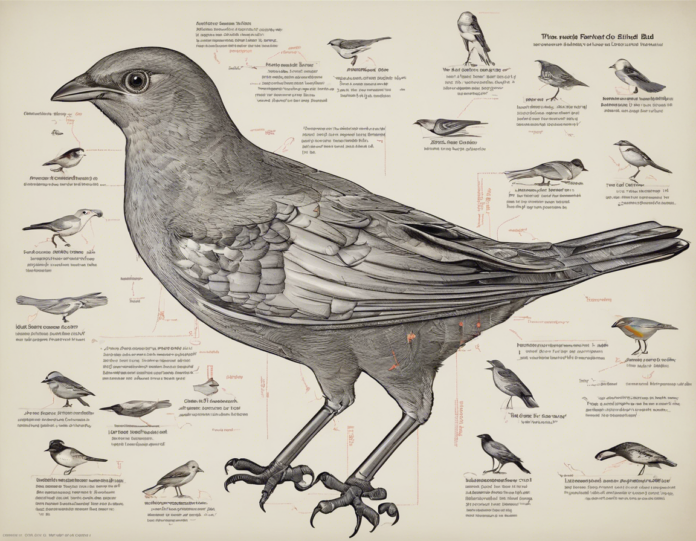Birds are fascinating creatures with unique anatomical features that enable them to thrive in various ecosystems. From their specialized respiratory system to their diverse beak shapes, each part of a bird’s body plays a crucial role in its survival and success. In this comprehensive guide, we will delve into the internal and external anatomy of birds, exploring the functions and adaptations of different body parts.
Internal Anatomy of Birds
1. Respiratory System:
Birds have a highly efficient respiratory system that enables them to meet the high metabolic demands of flight. Key features of their respiratory system include air sacs, which allow for a unidirectional flow of air through the lungs, ensuring maximum oxygen uptake. This unique system also plays a vital role in regulating body temperature.
2. Digestive System:
The digestive system of birds is adapted to their dietary habits. Birds have a crop, where food is stored and moistened before digestion begins in the proventriculus and gizzard. The gizzard contains grit that helps grind down food since birds lack teeth. Nutrient absorption occurs in the small intestine, while waste is eliminated through the cloaca.
3. Circulatory System:
Birds have a four-chambered heart that efficiently pumps oxygenated blood to the body and deoxygenated blood to the lungs for reoxygenation. This separation of oxygen-rich and oxygen-poor blood allows for enhanced metabolic efficiency, vital for sustaining energy-intensive activities like flying.
4. Reproductive System:
The reproductive system of birds varies between males and females. Females have ovaries where eggs are produced, while males have testes that produce sperm. During mating, sperm is transferred to the female’s cloaca, where fertilization takes place. Birds exhibit diverse breeding behaviors and nesting strategies depending on their species.
External Anatomy of Birds
1. Feathers:
Feathers are characteristic features of birds that serve multiple functions. They provide insulation, aid in flight, display for courtship, and camouflage. Feathers come in various types, such as contour feathers for flight and down feathers for insulation. Molting is the process by which birds shed old feathers and grow new ones.
2. Beak:
Birds have a diverse range of beak shapes and sizes that are adapted to their feeding habits. Beaks can be specialized for cracking seeds, probing for insects, tearing flesh, or filtering water. The shape of a bird’s beak often reflects its diet and ecological niche.
3. Wings:
Wings are essential for flight in most bird species. The structure of a bird’s wing, including the arrangement of feathers and bones, influences its aerodynamics and maneuverability. Birds have different wing shapes suited for various flying styles, such as soaring, hovering, or rapid acceleration.
4. Legs and Feet:
The legs and feet of birds are adapted to their mode of locomotion and habitat. Birds that perch have specialized feet with strong muscles for grasping branches, while birds that swim have webbed feet for propulsion in water. The arrangement of toes and claws varies among species based on their foraging behaviors.
Frequently Asked Questions (FAQs)
1. Do all birds have the same type of feathers?
No, birds have different types of feathers that serve various functions. For example, contour feathers provide the sleek outline of a bird’s body, while down feathers offer insulation.
2. How do birds breathe while flying?
Birds have a unique respiratory system with air sacs that allow for a continuous flow of oxygenated air during both inhalation and exhalation, ensuring a constant oxygen supply while in flight.
3. Why do birds have different beak shapes?
Birds have evolved diverse beak shapes to suit their specific dietary preferences and foraging techniques. A bird’s beak is a crucial adaptation that helps it efficiently capture and consume food.
4. Can birds fly with broken wings?
Birds rely heavily on their wings for flight, so a broken wing can severely impact their ability to fly. Injured birds may require veterinary assistance to recover and regain their flight capabilities.
5. How do birds navigate during migration?
Birds use a combination of visual cues, magnetic fields, celestial navigation, and memory of landmarks to navigate during migration. Some species also rely on innate migratory instincts passed down through generations.
Conclusion
The anatomy of birds is a testament to the remarkable adaptations that have evolved over millions of years, enabling these creatures to inhabit diverse environments and fulfill unique ecological roles. Understanding the internal and external anatomy of birds provides valuable insights into their behavior, physiology, and evolutionary history. Next time you observe a bird in flight or perched on a branch, take a moment to appreciate the intricate design of nature’s avian wonders.

